Trailblazing pilot Wally Funk is finally going to space
It has taken more than five decades for the accomplished pilot to achieve her goal, and when Funk blasts off on Blue Origin’s rocket Tuesday, she’ll be hoping more women will follow in her footsteps.
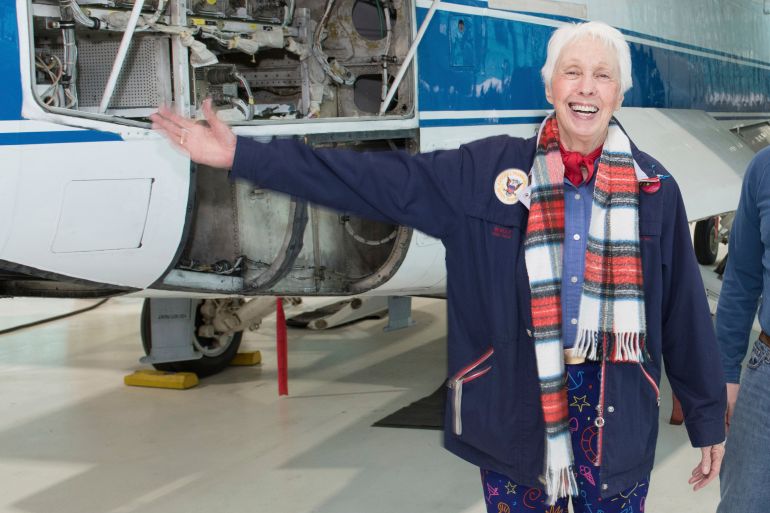
Higher, faster, longer. That motto has been keeping Wally Funk going her whole life, and ultimately led her to achieve her lifelong dream: going to space.
The trailblazing female pilot has always dreamed of becoming an astronaut and was denied the job in the 1960s due to her gender. That will all change on Tuesday as she straps into a Blue Origin capsule and rockets into the cosmos.
Keep reading
list of 4 itemsBlue Origin flight to rocket youngest person ever into space
Bezos taps aerospace pioneer Wally Funk for Blue Origin flight
Billionaires and their spaceships: What next for space tourism?
Billionaire Blue Origin founder Jeff Bezos, along with his brother, Mark Bezos, and Oliver Daemen, a student from the Netherlands, will round out the crew of four passengers on Blue Origin’s New Shepard rocket during its first-ever crew launch.
The rocket is set to take off from Texas in the United States at 8am local time (13:00 GMT). At 18, Daemen will be the youngest person to launch into space, and at 82, Funk will be the oldest.
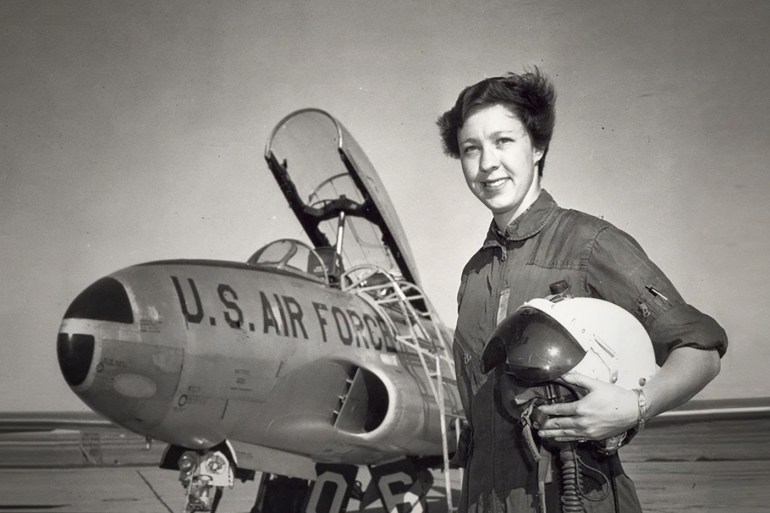
Women in space
Funk’s obsession with aeroplanes and aviation began decades ago.
As a child, she built planes out of balsawood and even had her first flying lesson at nine years old.
When she was a teenager, she obtained her pilot’s licence from Stephens College before moving on to Oklahoma State University, where she studied education and honed her skills.
In the university’s aviation club, called the “Flying Aggies”, she routinely outperformed the boys.
“I could do all the manoeuvres as well as the boys, if not better,” Funk told Al Jazeera.
She went on to become a flight instructor. While working at a military base, she heard about an Air Force project to recruit women for the US space programme.
Run by William Randolph Lovelace in the early 1960s, the Woman in Space programme set out to see if women were as capable of handling spaceflight as men. Pilot Jerrie Cobb, who was part of the programme, named her fellow members the First Lady Astronaut Trainees.
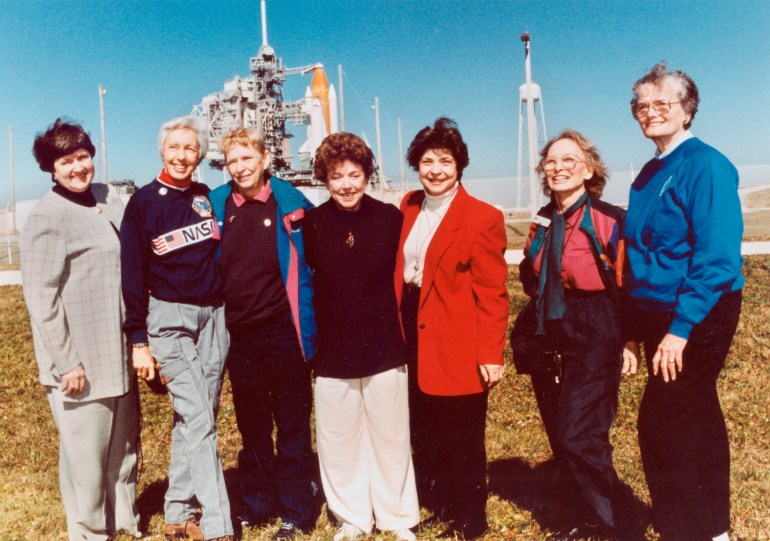
Funk applied, and despite being only 22 (the age requirements were technically 25 to 40), she was accepted.
She passed every test they threw at her, including spending more than 10 hours in a sensory deprivation tank, surpassing the record set by Mercury astronaut John Glenn.
Despite passing with flying colours, Funk was told she would not get to be an astronaut after all because the women’s programme was being cancelled. That didn’t slow Funk down one bit.
“I’m not a quitter,” Funk said. “Things were cancelled? Wally is going on. I’m not a quitter.”
She wrote to NASA repeatedly about becoming an astronaut but during that era, astronauts were predominantly men and either military pilots or engineers. Funk had studied education.
So she tried to go back to school to study engineering but said she was written off because she was a woman.
Funk decided to just keep pushing the boundaries of what a woman could do in aviation.
“I took every test I could,” she said. “I even went to Russia and took their cosmonaut tests and beat all the boys.”
Failure is not an option
Despite Funk’s success, space was still out of reach. But quit is just not in her vocabulary, so when a new era of commercial space flight began, she persevered.
She put a deposit down for a seat on a Virgin Galactic flight a decade ago after its billionaire founder Richard Branson announced he would one day take tourists to space. She didn’t know if she would live to see the day it happened, but she wanted in on the adventure anyway.
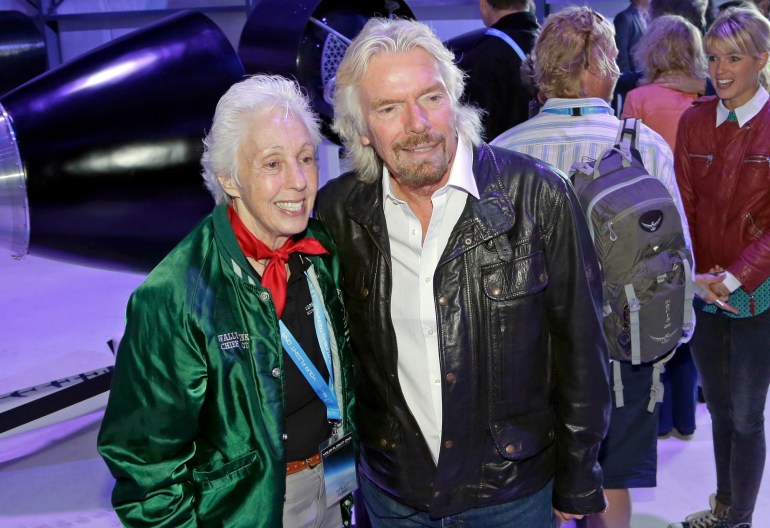
Then, in June, Funk received a call from another space billionaire — former Amazon.com CEO Jeff Bezos. He invited her to fly on the inaugural flight of his New Shepard rocket on July 20.
Tuesday’s flight will last approximately 10 minutes total, and for four of those minutes, Funk will get to experience breathtaking views of the Earth and experience weightlessness.
The capsule will then land under a parachute in the Texas desert, cementing Funk in the history books as the oldest person to fly to space and unseating astronaut John Glenn, who made the trip when he was 77.
The need for more diversity
Funk’s story of perseverance is nothing short of inspirational. Her struggle to be included as a woman, however, is one that has plagued NASA (and the aerospace industry at large) since its inception.
According to a report by career platform Zippia, only 12.5 percent of US aerospace engineers are women, and that statistic hasn’t really changed much over the previous decade.
Recently, the US space agency has made big strides to welcome more women and people of all backgrounds and ethnicities into its fold.
Four of its centres across the US are currently led by women — Kennedy Space Center, Johnson Space Center, Marshall Space Flight Center, and Glenn Research Center.
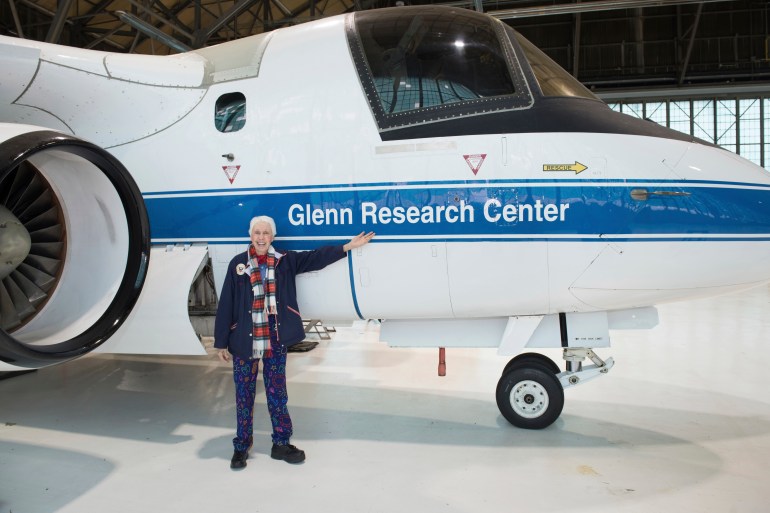
The deputy administrator of NASA is also a woman, as is the head of human spaceflight.
As part of the agency’s Artemis moon programme, NASA has pledged to send the first woman and the first person of colour to the moon in the next few years. Those astronauts will strap into an Orion spacecraft built by aerospace firm Lockheed Martin, one of NASA’s chief contractors.
Lockheed Martin recently opened up a new production facility in Florida to help streamline the process and bring more aerospace jobs to the area. The company said more than 20 percent of its leaders are women.
Kelly DeFazio, Orion director of production for Lockheed Martin, said the company will add at least 40 jobs in Florida and she’s hoping that many of them will go to women.
“My dad was part of the Apollo programme, so, it’s really exciting to see the area growing again and we [as Lockheed Martin] want to be a part of that,” DeFazio told Al Jazeera.
In an office not too far away, Suba Iyer is working on NASA’s next massive rocket, the Space Launch System (SLS). As an Indian-American scientist, she has seen the need for more diversity firsthand.
“I’m a mechanical engineer, and you don’t see a lot of women in my field, even today,” Iyer told Al Jazeera.
But after working in the aerospace industry for nearly 30 years on various programmes, including the space shuttle and now SLS, Iyer said she is finally seeing things change.
“It’s amazing to be part of this programme,” she said.
“I have teenage boys, so they just have seen what is happening and what I’m a part of, and it makes a difference,” Iyer added. “My kids are so proud of me.”
One benefit of the burgeoning commercial space sector is that by working with more companies, NASA and others are learning new ways of thinking and innovating, and bringing more diverse teams into the fold.
NASA and the National Science Foundation are also collaborating on an initiative to help attract people to the field from communities that are currently underrepresented in careers in science, technology, engineering and mathematics.
And as long as the push to include a more diverse workforce continues, the US seems poised to continue as a world leader in space.